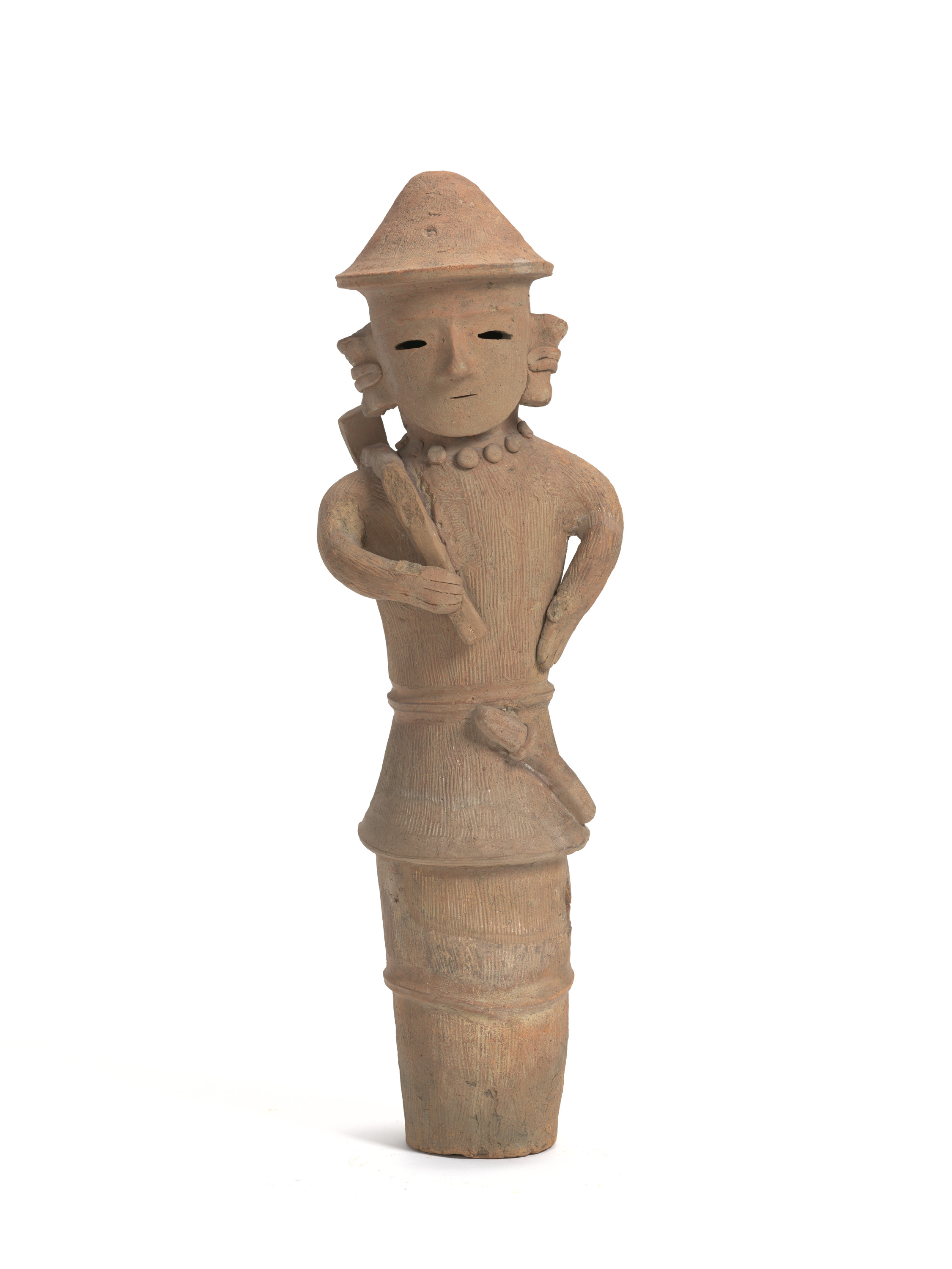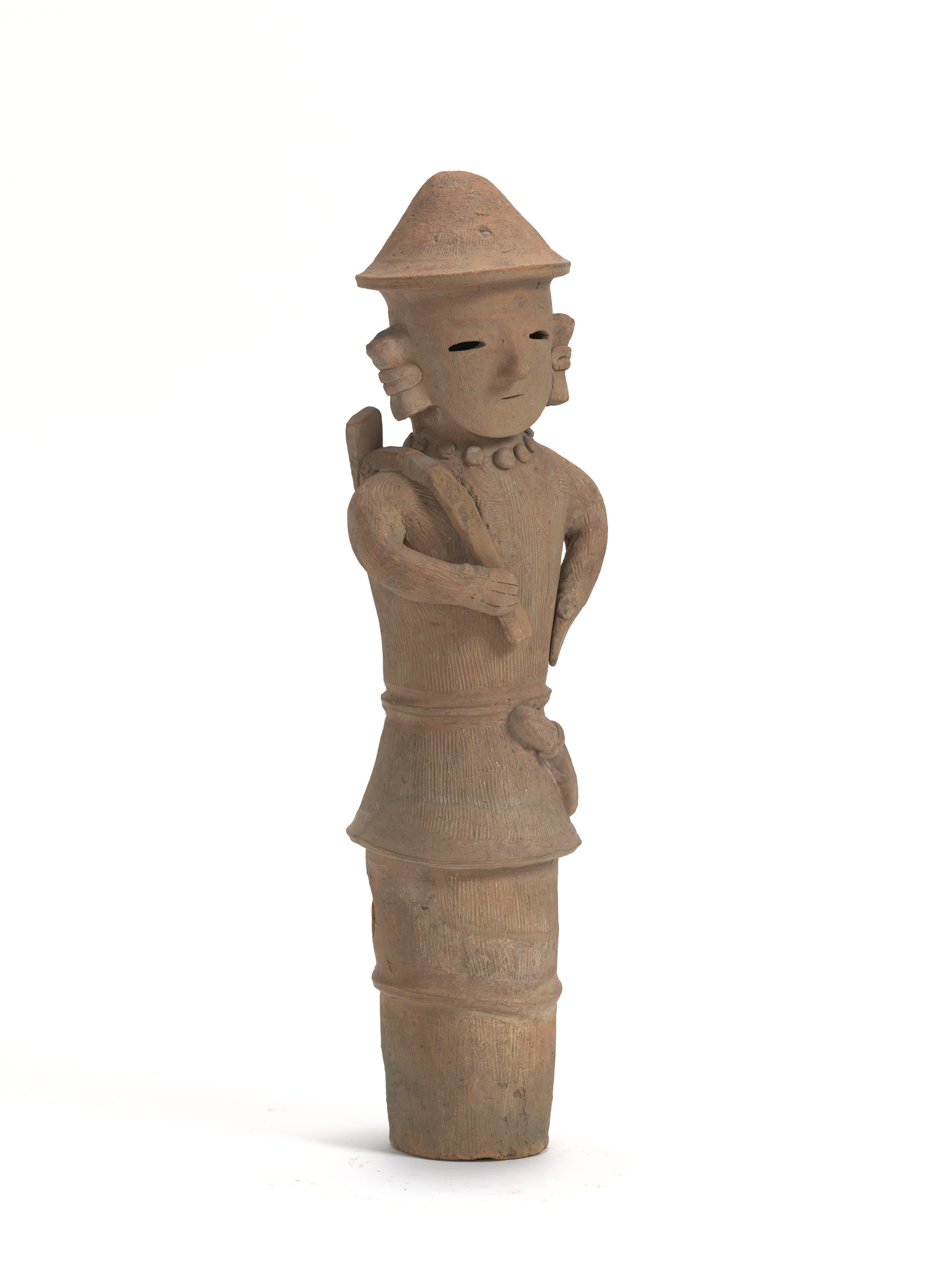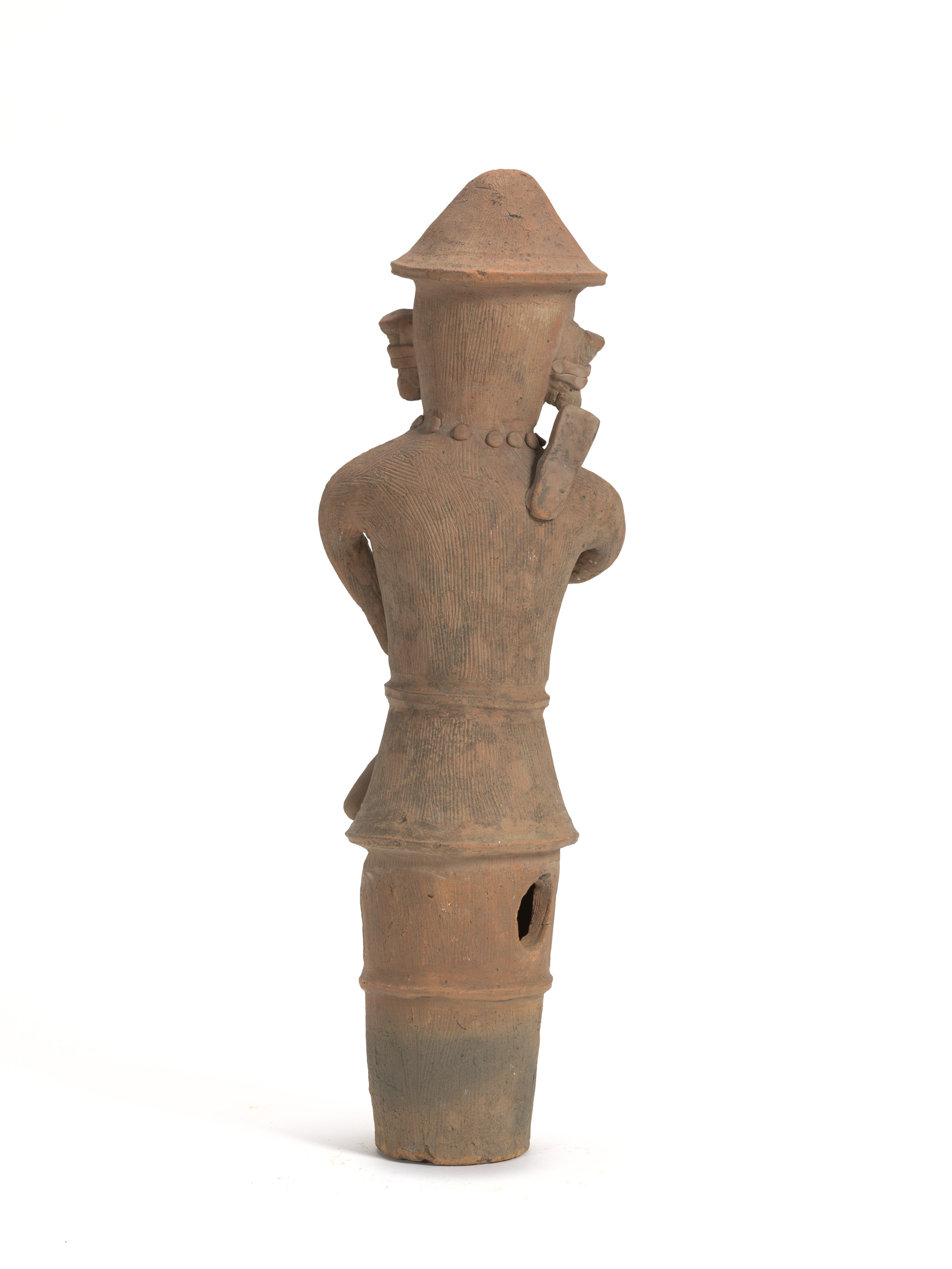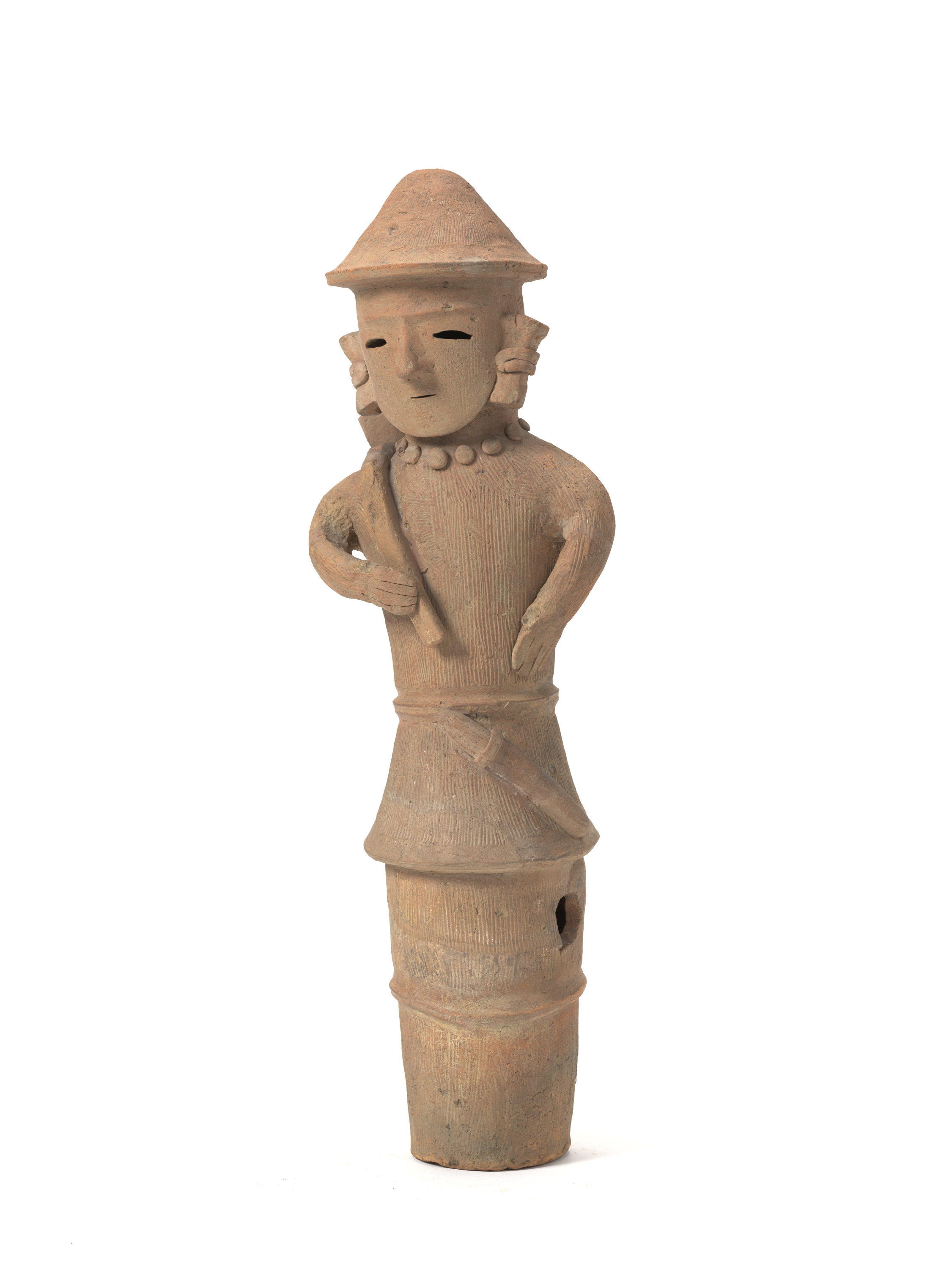- TOP
- Haniwa Male Figurine
Overview
Important Art Object
Haniwa Male Figurine
- Museum No.
- JK281
Showing 1-6 of 6
| Title | Haniwa Male Figurine |
|---|---|
| Designation | Important Art Object |
| Artist | |
| Category | Archaeology(J), Haniwa |
| Country | Japan |
| Period | Kofun (Tumulus) |
| Century | 6th |
| Year | |
| Quantity | |
| Materials | |
| Dimensions | Height 75cm |
| Inscription by | |
| Signature/Seals Etc | |
| Donor |
This object may be one within a set or the title of a set. To see all objects in the set, perform a Category Search by the Museum Number below, entering numerals only before the hyphen.

















Human-figured haniwa figurines have generally been found in tumuli postdating the mid-5th Century. Earlier tumuli tend to have non-human haniwa forms, such as canopies, shields, armor and houses. Many human-figured haniwa, including female shamans, dancers, people in full dress, warriors, farmers, harpists, and hawking men, have been found in the Kanto district.
This male figure wears a sedge hat and a necklace and dresses his hair in the mizura style. He wears a short sword, and carries a hoe on his right shoulder.
Burial styles changed as stone room tumuli became more common. Typically, several types of clay figurines would be arranged in front of the stone room, almost as if they were attendents at the burial.
Human-figured haniwa are helpful in studying costumes and customs of the periods in which they were made.
Japan-Kofun (Tumulus)